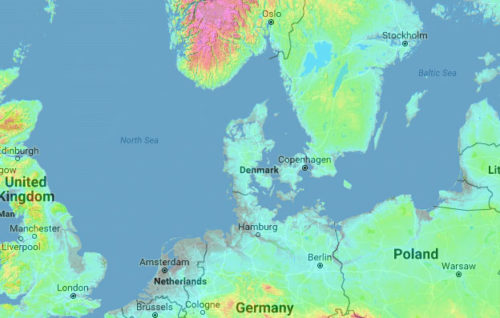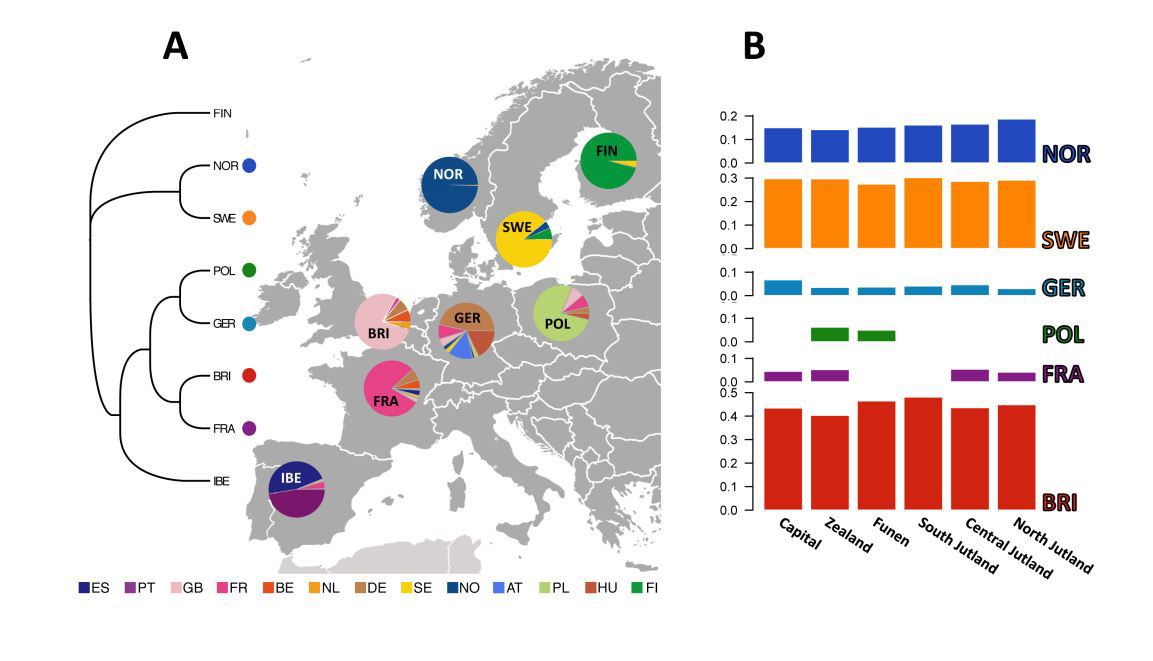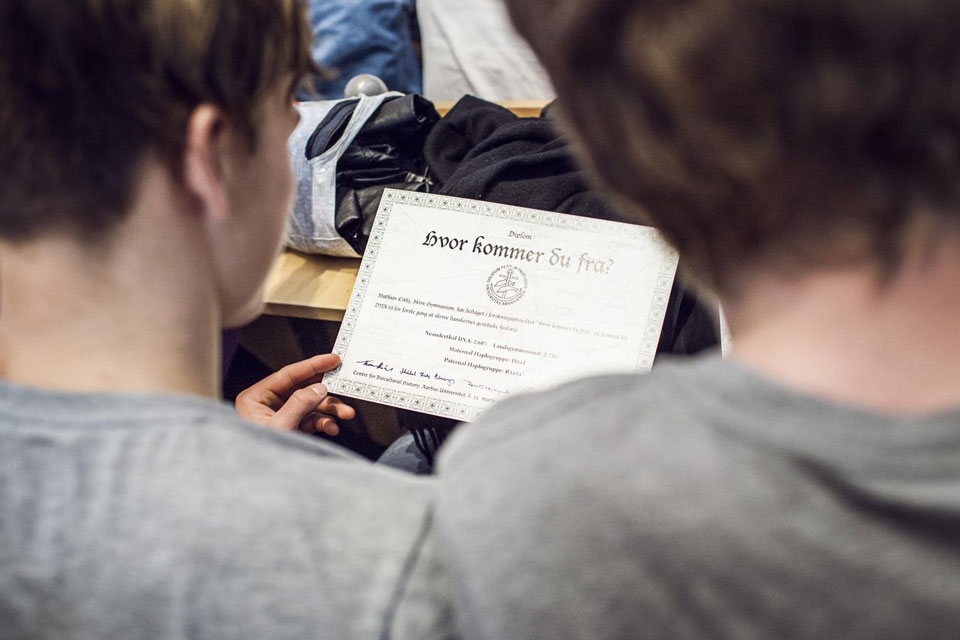When studied by foreigners, Danes always end up as being characterised through their “tribal” lifestyle. New studies of their DNA confirms this trait

Denmark is a small archipelago with a tiny population of less than six mill people, who speak a distinct language, Danish, with its own literature and poetry as well as more than 30 different dialects. Foreigners living here often characterise the Danes as a tribe noting for instance that Danes always seem to find that they are somehow related (by kinship, geography, of “friends”) even when they strike up a conversation with a complete stranger.
As Denmark was always a seafaring nation, this is somewhat curious. From the hollowed oak canoes of the Stone Age, and the first clinker-built ship from the late Roman Iron Age Nydam-boat a continuous line can be drawn through the mighty Viking ships to the 21st century fleet of container ships operated by Maersk Line (the largest in the world).
One should imagine that such a sea-faring nation, would be peopled with a culturally and genetically diverse population. Not least, since History amply demonstrates that the Danes were able to organise several diasporas (Viking Normandy and the Danelaw in Britain), as well as two “empires” – Cnut the Great’s in 1016 – 1039 and the Scandinavian Union, 1397 – 1523.
Homogenous Genetic Makeup

However, recent studies of the genetic and anthropometrical data from c. 800 high schools students show a different story. Simply put, the scientists could observe a remarkable homogeneity across different geographic regions; but also, that the Danish population was highly genetically admixed with its neighbours. In this study, Denmark presented a genomic affinity with neighbouring countries like Britain, Sweden, Norway, Germany, and France; (listed here in decreasing weight). Surprisingly, Norway and Sweden seen together accounted for a contribution (42-49%) [1] to the ancestry profile on par with that of Britain (40-48%). Even more curious was the tiny demographic input, which Germany had supplied, on par with the French contribution. Finally, a slight Polish contribution could be detected, presumably witnessing to the Wend settlements in the South of Denmark in the late Viking Age.
The conclusion is that on the one hand modern Danes present themselves with very homogenous genetic profiles witnessing to their character as a unique “people” or even “tribe” [2]. Though Danes are not always as closely related as one should expect, their genetic homogeneity witnesses to a long-term immersion in each other’s lives. The genetic profile is expressed universally as homogenously blended
However, the genetic studies also demonstrate that contemporary Danes are the result of a historic intercourse with a lot of other Scandinavians plus the British. The study does not present a hint on when or where this admixture took place. Another group studying aDNA of the Danes will probably be able to contribute a more detailed overview of the different phases at a later stage. A safe bet, though, is that the present profile was the result of Danes trafficking back and forth across the North Sea and Scandinavia from ca. 400 – 1500. Which only goes to show, that while mountains, forests and bogs tend to border people up, sea and water unite.
Historical Effective Populations
Modern geneticists are not only able to detect the genetic composition of a given population and its affinity (or lack thereof) with its neighbours. Another option is to estimate genetic change, thus calculating the size of a given population at given times. Measuring this for 150 generations (4500 +/-300 years) the scientists were able to show that the size of the population in Denmark was more or less stable until the 17th century when growth set in. It appears that the events following the Black Death may have had a less severe impact on the population density in Denmark than previously thought; this, however, does not fit with the evidence derived from studies of settlements, medieval accounts, etc. and remains to be further documented.
NOTES:
[1] Some of the “Swedish element in the admixture may, however, be cloaked as Danish, as large parts of present Sweden was Danish up until 1660
[2] Integration: Antropoligske perspektiver. By Karen Fog Olwig and Karsten Pærregaard.
Museum Tusculanum 2007
SOURCEs:
Nationwide Genomic Study in Denmark Reveals Remarkable Population Homogeneity. By Athanasiadis et al.
In: Genetics Early online August 17, 2016; DOI: 10.1534/genetics.116.189241
Genomic study of high school students from Denmark reveals remarkable genetic homogeneity
READ ALSO:
The Genomic History of Denmark
FEATURED PHOTO:
A Danish high school student participates in the “Where Are You From?” outreach program. Credit: Anders Traerup, Aarhus University
